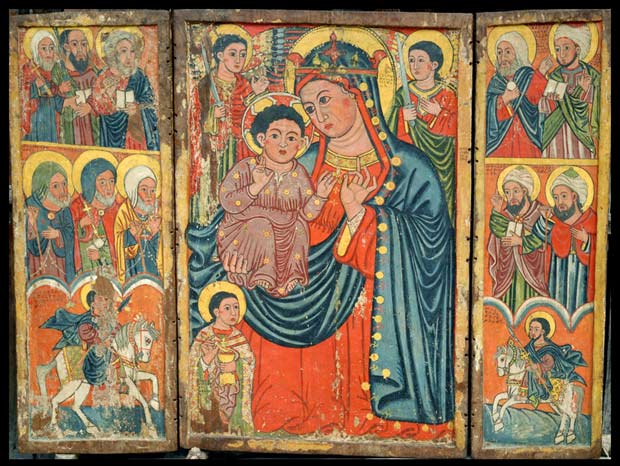One object in the Carlos that represents key Baroque themes is the Christian icon from 17th century Ethiopia. This object is important as it was used by Jesuit missionaries to spread their religion throughout the area. Its portable nature allowed it to be carried around so Europeans could bring it with them and convert from wherever. It contains important biblical imagery, including a depiction of the crucifixion and the Madonna. The object would have also been used to instruct Ethiopian artists on what kinds of works to create, as art played a key role in colonization. It is an example of the role cultural objects played in European social transformation.
The piece also reflects Baroque art themes in its deep-toned color palette and imagery. It was a way for the Jesuits to remind the people they were colonizing of their seemingly benevolent Christian mission. Interestingly, Ethiopia had been Christain since the 4th century. It was probably already familiar with icons. I’m curious as to how this object differs from those that were used before the Baroque. How did the arrival of new Jesuit missionaries affect the way the religion was used?
For some reason, the Carlos’ website was not letting me see an image of the icon, but I found an Ethiopian work from slightly earlier that portrays the same themes:

